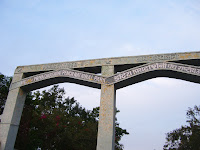Time for a quick rant on one of my pet subjects. Came across this news article in Mint today, which talks about the Government considering increasing 200000 engineering seats across the country, ostensibly to address the 'growing shortage of engineers' in India. This assumes that just increasing the supply of engineering seats (to satisfy the growing demand of such seats within the student community - which I am not sure is that true today as it was maybe a decade ago) would resolve the shortage of engineers in the country. What, of course, nobody bothers to look at is the quality of such engineers and how 'employable' they really would be once they get their degrees and diplomas.
To illustrate the point, consider my case. I went to a top-3 engineering college in Mumbai University to 'study' mechanical engineering. And I did fairly well, if the yardstick for that is securing a first class throughout and a first-class with distinction in the final year. Then, as with the majority of my ilk, I joined the software industry, then riding on the Y2K boom. As I strung together pieces of codes, I drifted further away from the 'knowledge' gained during those four years. So much so that, ten years down the line, I admit, with more than a tinge of sadness, that I only vaguely remember the workings of an internal combustion engine or what the Bernoulli principle is. If that is my story, coming from a college that had decent infrastructure and some very good professors, I can only imagine the plight of the tens of thousands of engineers today that graduate from the hundreds of non-descript, two-classroom-two-professors colleges that are present throughout India.
I guess the key question to ask is : shortage of engineers FOR WHAT ? At the time I left engineering college, I was told that the logical and analytical skills were the assets that made me fit for work as a programmer. So if the shortage of engineers is primarily to work in the tech and other sectors, then maybe increasing the number of seats might reduce the resource crunch that is being faced. However, it the shortage of engineers is in the R & D or maybe even the teaching fields, then increasing 20000 seats is simply not the answer. What amazes me is that I never come across the headline that reads: "Government to recruit 5000 teachers for higher education". As long as teaching is not made a lucrative career option, especially in higher education, it will only attract people who could not make it elsewhere. Even during my engineering years I could sense it, where the younger profs were ordinary at best and the experienced ones used to add value to our knowledge. I shudder to think what the situation is now. As long as the standard of teaching is not improved, then adding 2000 or 200000 seats would not make any difference. The students that will come out would be engineers only in name.
Regards
Amit
To illustrate the point, consider my case. I went to a top-3 engineering college in Mumbai University to 'study' mechanical engineering. And I did fairly well, if the yardstick for that is securing a first class throughout and a first-class with distinction in the final year. Then, as with the majority of my ilk, I joined the software industry, then riding on the Y2K boom. As I strung together pieces of codes, I drifted further away from the 'knowledge' gained during those four years. So much so that, ten years down the line, I admit, with more than a tinge of sadness, that I only vaguely remember the workings of an internal combustion engine or what the Bernoulli principle is. If that is my story, coming from a college that had decent infrastructure and some very good professors, I can only imagine the plight of the tens of thousands of engineers today that graduate from the hundreds of non-descript, two-classroom-two-professors colleges that are present throughout India.
I guess the key question to ask is : shortage of engineers FOR WHAT ? At the time I left engineering college, I was told that the logical and analytical skills were the assets that made me fit for work as a programmer. So if the shortage of engineers is primarily to work in the tech and other sectors, then maybe increasing the number of seats might reduce the resource crunch that is being faced. However, it the shortage of engineers is in the R & D or maybe even the teaching fields, then increasing 20000 seats is simply not the answer. What amazes me is that I never come across the headline that reads: "Government to recruit 5000 teachers for higher education". As long as teaching is not made a lucrative career option, especially in higher education, it will only attract people who could not make it elsewhere. Even during my engineering years I could sense it, where the younger profs were ordinary at best and the experienced ones used to add value to our knowledge. I shudder to think what the situation is now. As long as the standard of teaching is not improved, then adding 2000 or 200000 seats would not make any difference. The students that will come out would be engineers only in name.
Regards
Amit









